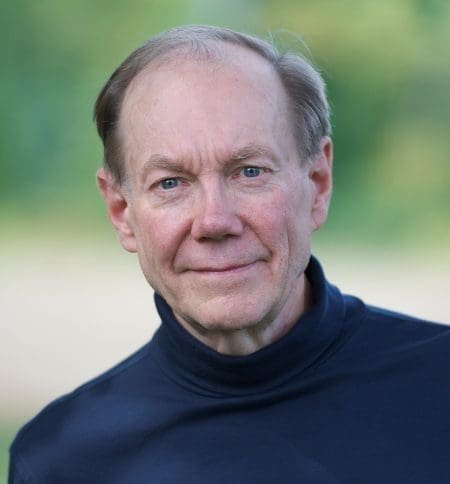 Anyone who has been employed recently as an academic is aware of a dangerous trend: the abandonment of meritocracy. Meritocracy, hiring and promotion on the basis of merit, was the norm for over a century.
Anyone who has been employed recently as an academic is aware of a dangerous trend: the abandonment of meritocracy. Meritocracy, hiring and promotion on the basis of merit, was the norm for over a century.
Although it made the U.S. the most prosperous country in the world, it is now under aggressive attack.
Affirmative action has resulted in problems, especially at top-flight universities where academically weaker, minority students compete with academically much stronger White and Asian students.
In the end, this harms both Black and Hispanic students. It would be better if they graduated at the top of the class at an average university than at the bottom of the class at an Ivy League college.
The well-known case of Allan Bakke illustrates a major concern with affirmative action. By the 1970s, affirmative action was established policy at many colleges.
In response, the University of California, Davis, devised an affirmative action plan for its Medical School.
The plan called for 84 percent of openings to be filled according to traditional academic qualifications, while 16 percent were set aside for “disadvantaged” applicants, mostly racial minorities.
One White applicant, Allan Bakke, was rejected twice under this plan. His undergraduate GPA was 3.44 while the disadvantaged track science average GPA was 2.62.
In contrast to the “disadvantaged” track, which was in the 35th percentile, Bakke’s MCAT score for science was in the 97th percentile. Bakke clearly performed better than most minority hopefuls.
Bakke realized that this was an example of the harm caused by “equity” goals, coupled with the rejection of merit-based consideration.
Bakke sued, alleging that he was the victim of racial discrimination. Bakke, the son of a mail carrier and school teacher, served in Vietnam as a medic, and volunteered at local emergency rooms.
His life goal was to become a doctor. Bakke prevailed in the lower courts, so U.C. Davis appealed to the California Supreme Court.
In 1976 the California high court decided 6-1 in favor of Bakke. Judge Stanley Mosk wrote the decision in favor of Bakke and against the university.
He reasoned that, to rule in favor of affirmative action “would represent a retreat in the struggle to assure that each man and woman shall be judged based on individual merit alone.”
As a result of his written decision, Judge Mosk became the subject of denunciations, student protesters screaming outside his office window, and mobs condemning him.
U.C., Davis, appealed to the U.S. Supreme Court. In 1978 the four conservative Justices affirmed the lower court’s ruling, and four liberal judges upheld the university’s racial favoritism that permitted discrimination against White applicants.
Justice Louis Powell, Jr., found the University of Davis’ affirmative action policy unconstitutional. Consequently, the 4-to-5 decision admitted Bakke to medical school.
In 2003, the Supreme Court again took up the affirmative action issue. Justice O’Connor wrote for the majority upholding affirmative action.
Chief Justice Rehnquist noted in his dissent that the Civil Rights Act of 1964 made quotas illegal. Justice Harry Blackmun wrote that this decision was a “regrettable but necessary stage of ‘transitional inequality’,” hoping that it would end “within a decade at the most.”
In 2003, Justice O’Connor, wrote that she hoped the policy would end within 25 years. It actually ended a few days ago with the Supreme Court ruling that discrimination based on race is unconstitutional.
Predictably, the media blasted the Supreme Court for what they called this racist ruling.
Columbia University professor Nicholas Lemann sought to bolster the importance of affirmative action by contrasting the careers of the two doctors: Allan Bakke, who was originally denied admission to U. Cal. Med. School, and Patrick Chavis, a Black applicant, who, though he scored much lower on objective examinations and received lower grades, was admitted through its disadvantaged program.
Chavis, the son of a single mother, grew up poor but pressed forward. After graduation from medical school, Chavis served the poor Black community of Compton.
By contrast, the White Bakke became an anesthetist working in a White area of the Middle West. Chavis, through affirmative action admission to med school, provided a public service to the community beyond being another doctor.
He paid back to the community in a way Bakke did not. Thus, Lemann argued, affirmative action is necessary for the good of everyone.
However, the story does not end well. On June 19, 1997, the Medical Board of California suspended his [Chavis’s] license to practice medicine documenting he was unable to perform some of the most basic medical duties and was guilty of gross negligence and incompetence when treating patients – evidently some died due to his incompetence.
The poster boy of affirmative action became the poster boy against affirmative action. Ironically, the Chavis story failed to be reported by most major media outlets.
Unquestionably, in critical areas like medicine and in professions like airline pilots, merit must be the only criteria used to train and employ.
———————–
Dr. Jerry Bergman has taught biology, genetics, chemistry, biochemistry, anthropology, geology, and microbiology for over 40 years at several colleges and universities including Bowling Green State University, Medical College of Ohio where he was a research associate in experimental pathology, and The University of Toledo. He is a graduate of the Medical College of Ohio, Wayne State University in Detroit, the University of Toledo, and Bowling Green State University. He has over 1,800 publications in 12 languages and 60 books and monographs. His books and textbooks that include chapters that he authored are in over 1,500 college libraries in 27 countries.
